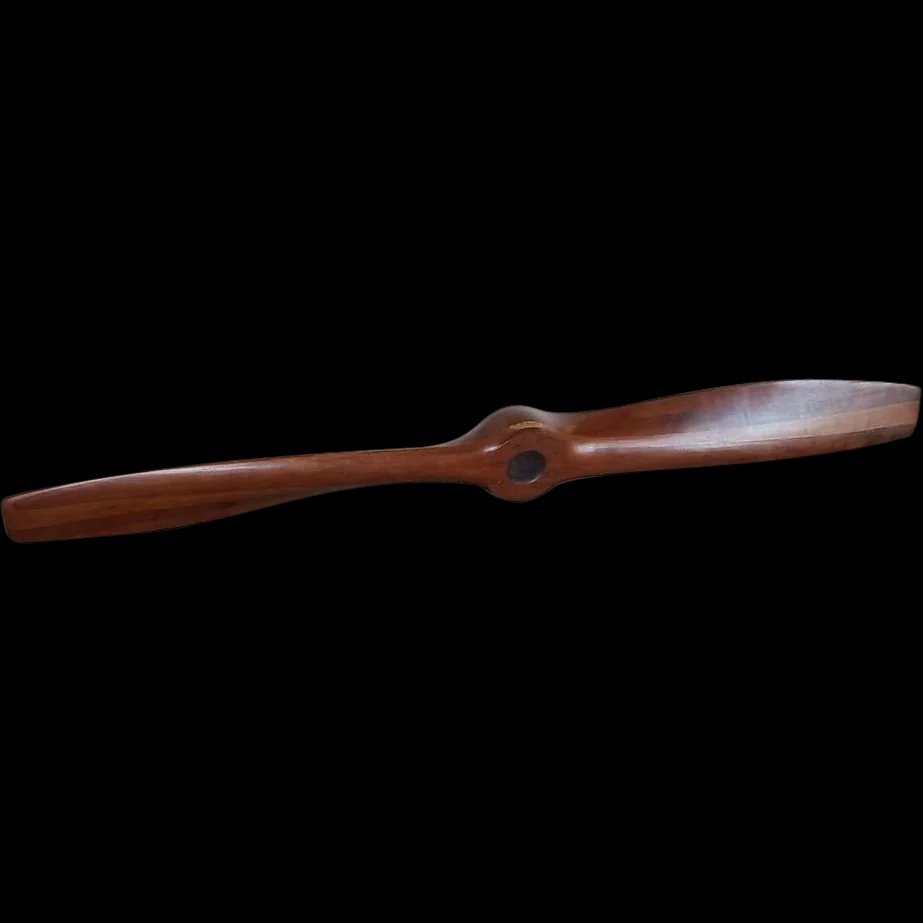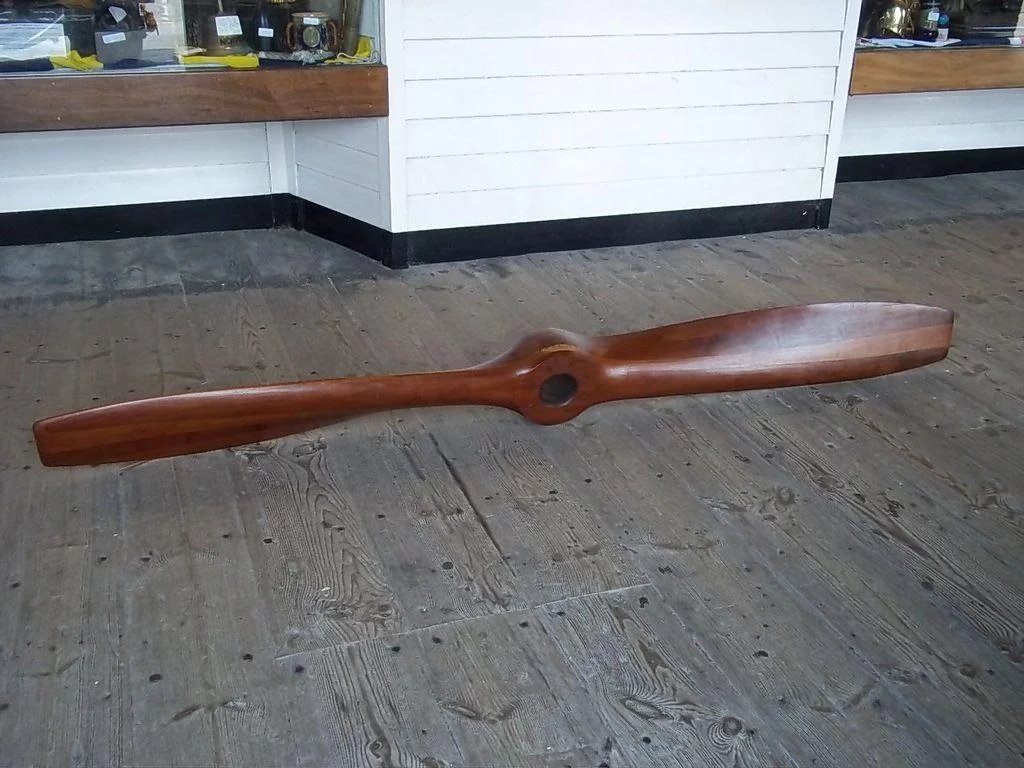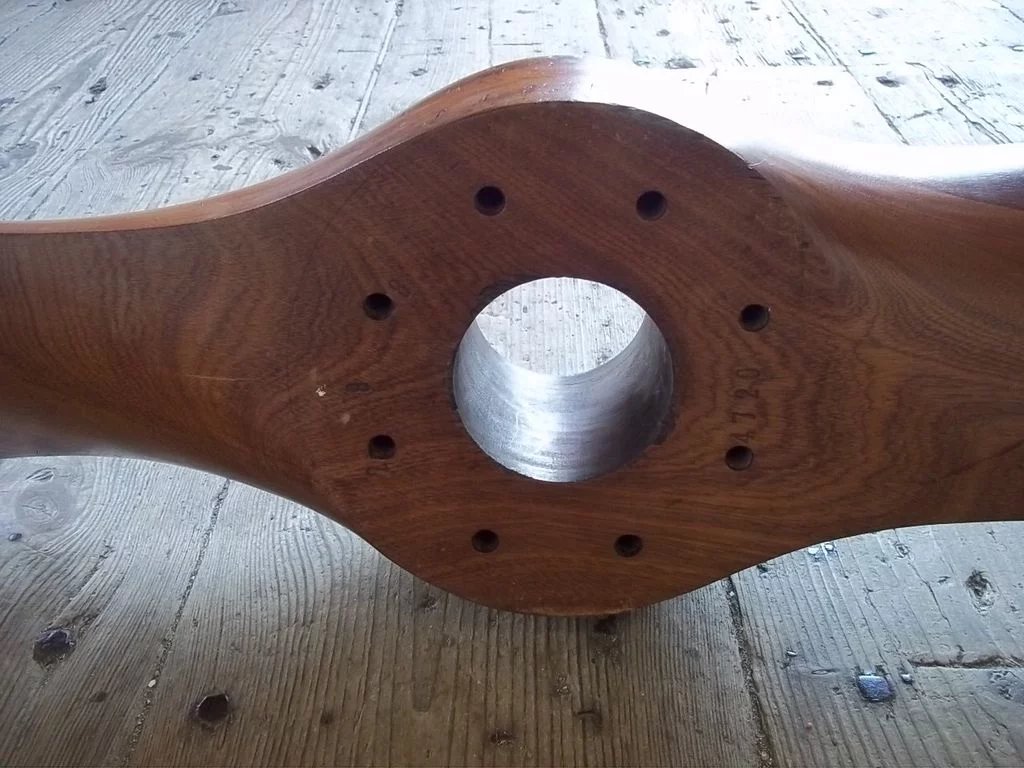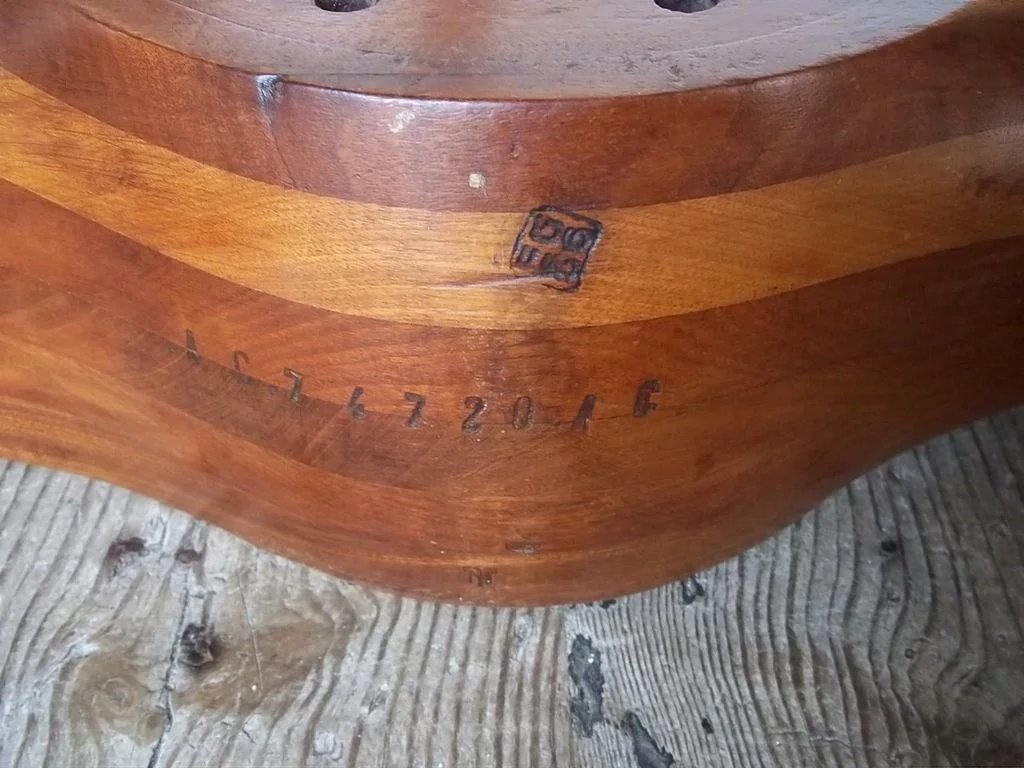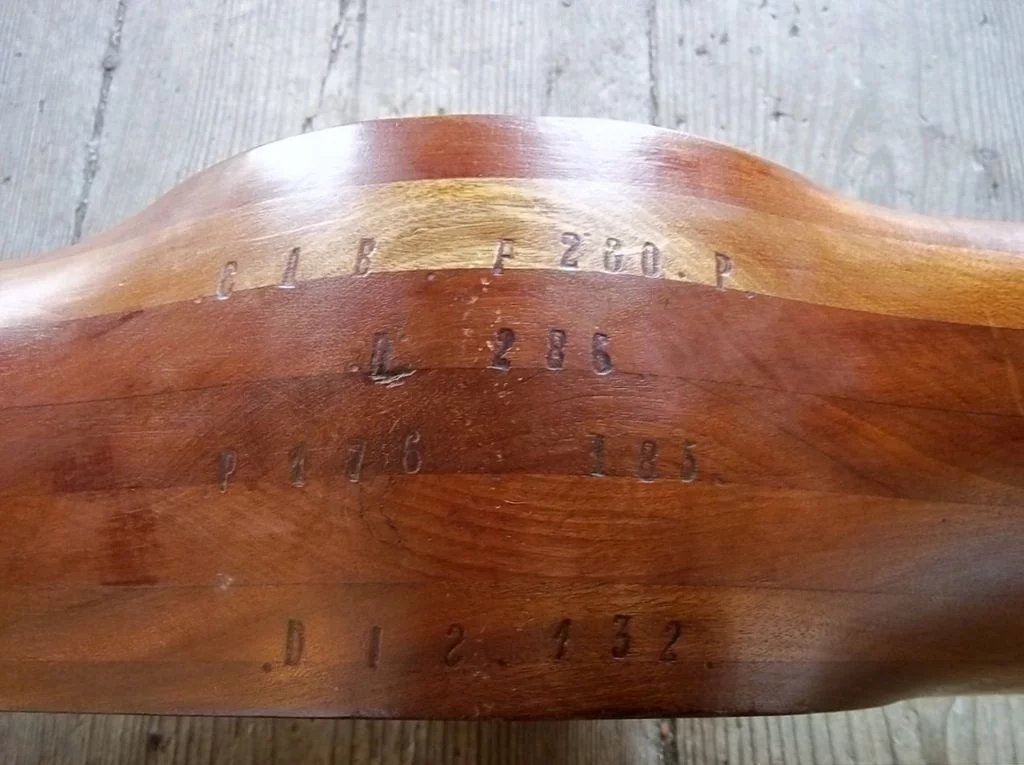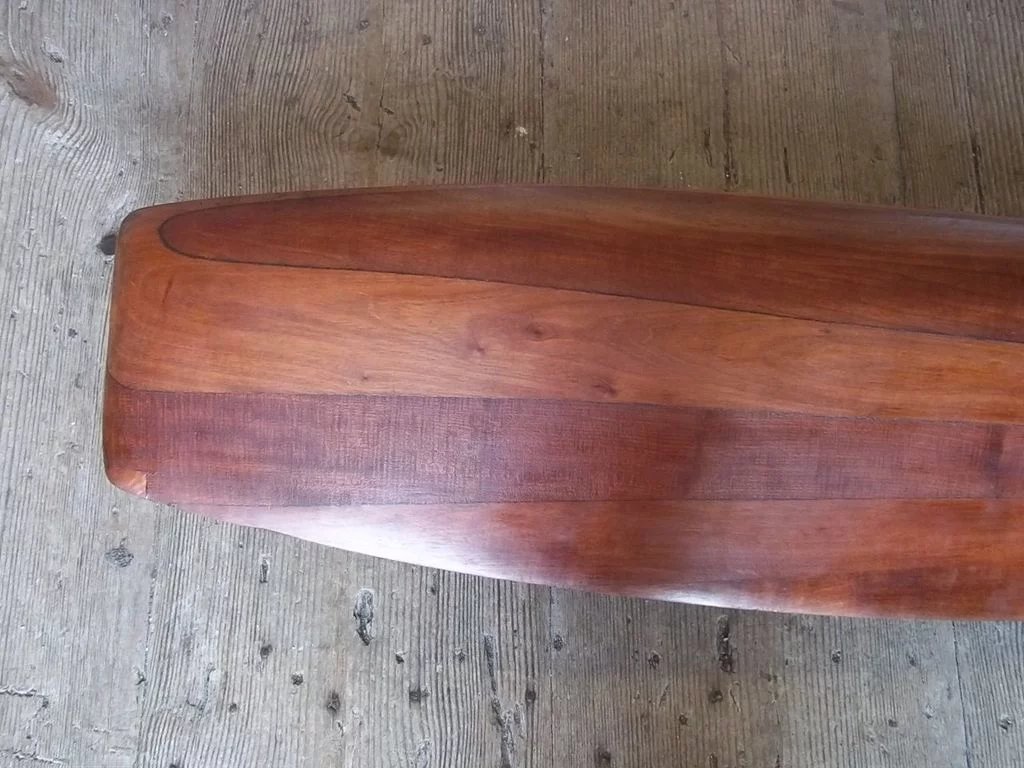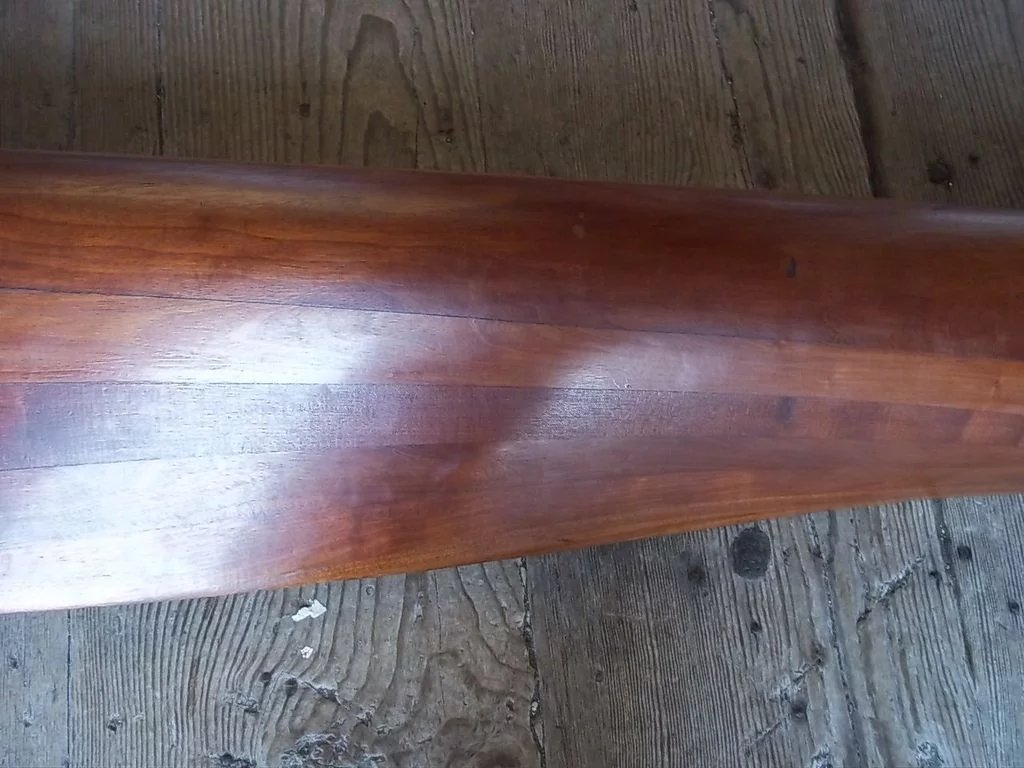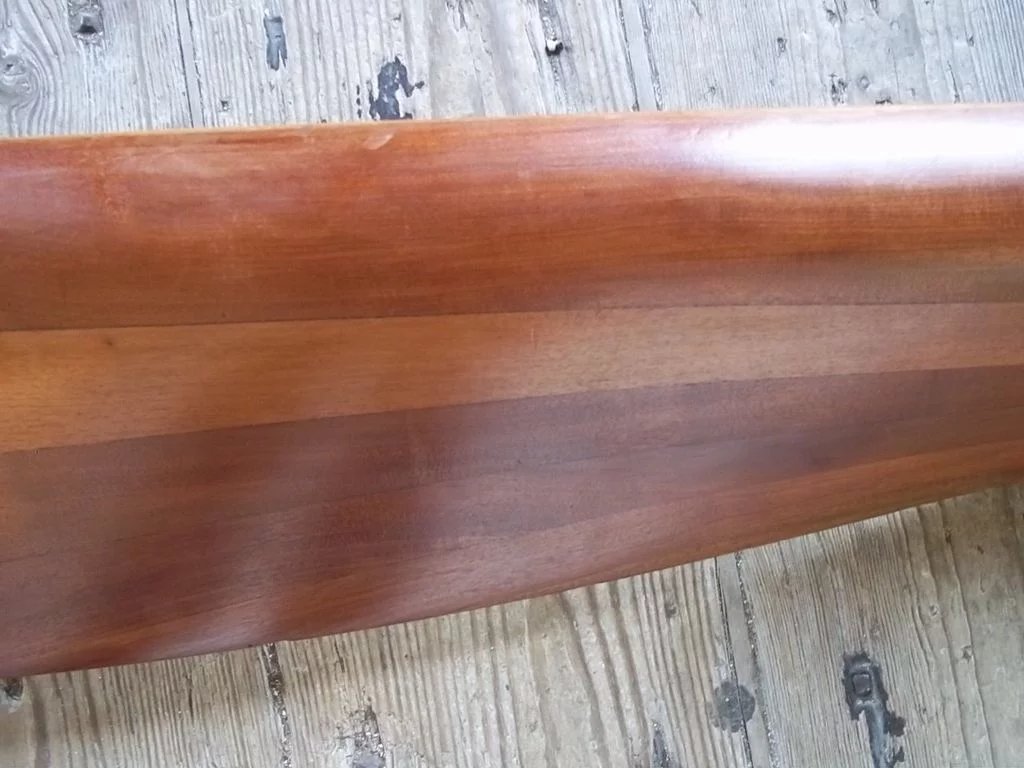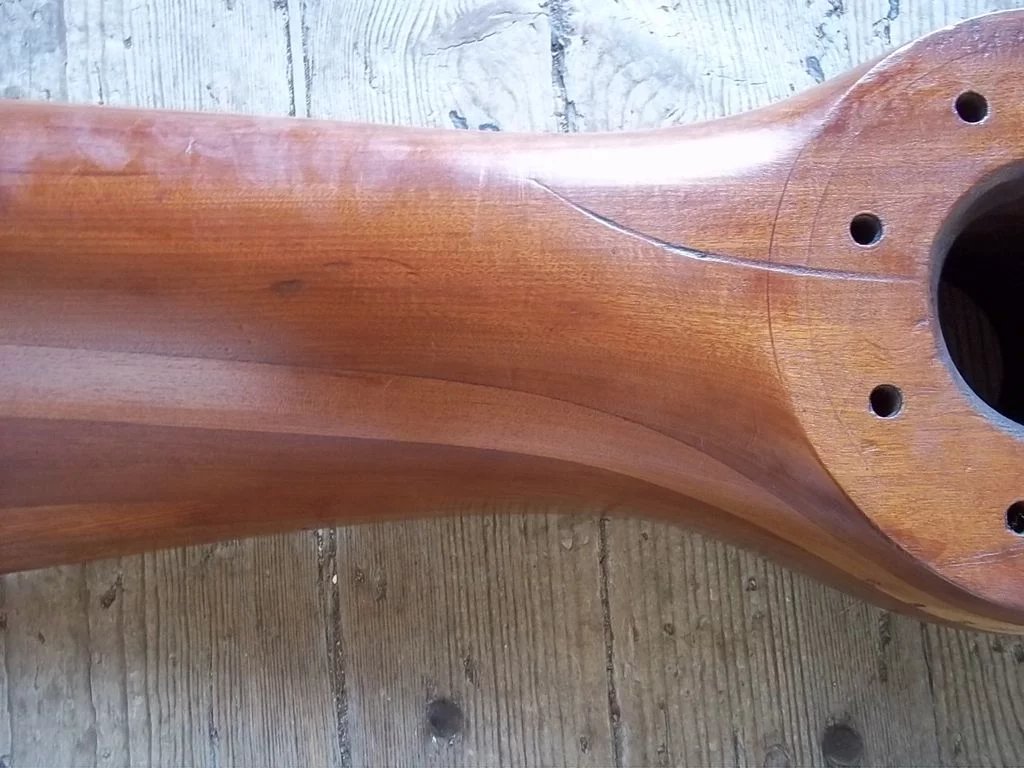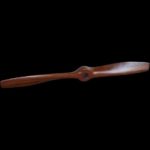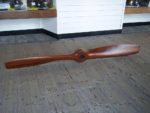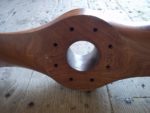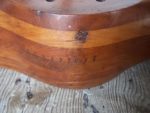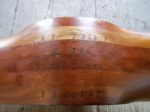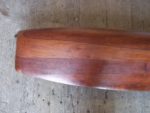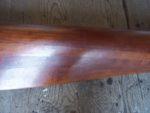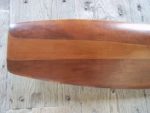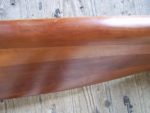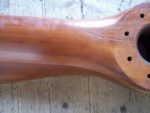~ Original 8-Bolt Propeller From WW1 Italian Ansaldo A1 “Balilla” Fighter Aircraft ~
A fine example of a laminated 8-bolt wooden propeller from an Italian Ansaldo A1 Balilla WW1 fighter aircraft, c1918.
The propeller is complete.
One of the hub sides is stamped “288 4720”.
The edges of the hub are also stamped. One side reads :-
“AC.74720AC” and “E636”.
The other side reads :-
“CAB.F280P
L286
P476185
D12.432”
~ Dimensions ~
The propeller has a total length of 112.5 inches (185.75cm) and a depth of 6.5 inches (16.5cm). The blades each have a length of 52 inches (132cm), with the hub having a diameter of 10 inches (25.5cm). The hub’s bolt holes has a diameter of 0.5 inches (1.25cm). The central spindle hole has a diameter of 5 inches (12.75cm).
~ Condition ~
The propeller is in excellent condition. There is very little scratching and is a fine example for it’s age. There are some period scarfed in repairs.
~ Ansaldo A.1 Balilla ~
The Ansaldo A.1, nicknamed “Balilla” after the Genoan folk-hero was Italy’s only domestically-produced fighter aircraft of World War I. Arriving too late to see any real action, it was however used by both Poland and the Soviet Union in the Polish-Soviet War. The first prototype was completed in July 1917, but acceptance by the air force did not occur until December.
The first of an original order of 100 machines entered service in July 1918. The A.1s were kept away from the front lines and mostly assigned to home defence duties. In the four months before the Armistice, A.1s scored only one aerial victory, over an Austrian reconnaissance aircraft.
It was during this time that Ansaldo engaged in a number of promotional activities, including dubbing the aircraft as Balilla, flying displays in major Italian cities, and in August donating an example to Italian ace Antonio Locatelli as his personal property amidst a press spectacle, which backfired when one week later a mechanical fault in the aircraft caused Locatelli to make a forced landing behind enemy lines and be taken prisoner.
Despite all this, the air force ordered another 100 machines, all of which were delivered before the end of the war. At the armistice, 186 were operational, of which 47 aircraft were ordered to remain on hand with training squadrons, and the remainder were to be put into storage.
The plane fitted a one pilot crew and had a length of 6.84m (22 ft 5 in), a wingspan of 7.68m (25 ft 2 in) and a height of 2.53m (8 ft 4 in).

